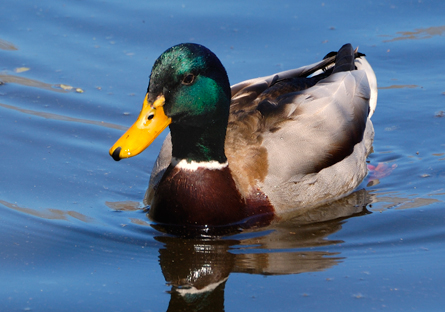- More than 2 years ago
BOSTON — Duck and goose droppings, the bane of golfers and park visitors, may help scientists track the spread of bird flu — with olfactory assistance from properly trained animals.

Scientists have trained mice to identify the poop of ducks infected with avian influenza, chemical ecologist Bruce Kimball reported August 24 at the American Chemical Society’s fall meeting.
If mice can pick up the scent, it should also be possible to train dogs to track the flu trail, said Kimball, of the National Wildlife Research Center in Fort Collins, Colorado, and the Monell Chemical Senses Center in Philadelphia. “I like to joke that we’re going to send people out with mice on leashes,” he said. “But my vision is we could train dogs in much the same way.”
Mice trained on the scent of poop from infected birds correctly chose infected poop over uninfected poop 90 percent of the time, Kimball reported. When the mice were presented with new droppings not used in the training sessions, the rodents identified the flu-laced feces 77 percent of the time.
Many diseases, such as diabetes and some cancers, are known to alter the chemical profile of an infected individual’s breath, so the presence of a poop profile also seems reasonable, Kimball said. He and his colleagues suspect that the mice are tuning in to compounds produced by the ducks’ immune systems in response to the flu.
Evidence suggests that some duck species excrete much more flu virus than other birds, making the water birds prime disease spreaders via migratory travels or, more likely, when ducks are bought and sold in poultry markets. Hundreds of millions of ducks, chickens, turkeys, and geese died of flu or were killed to prevent the spread of the H5N1 virus that emerged in Hong Kong in the late 1990s. By 2006 more than 200 people had picked up the bug, and estimates suggest the economic impact of the disease was more than $10 billion.
If dogs can be trained to sniff out infected birds, it could streamline efforts to control an outbreak.
“Based on my experience, if a mouse can be trained for a scent chore, so can a dog,” said Gary Settles, director of the Gas Dynamics Laboratory at Pennsylvania State University in University Park. “Their olfactory apparatus is similar, just of a different size,” said Settles, who was not involved in the research. “I know of no chemical-trace detection chore that mice can do but dogs cannot.”
The scientists are still trying to figure out the precise chemical compounds that the mice latch on to, Kimball said. The research team irradiated the duck droppings to make sure the flu wasn’t infectious — a precaution that may have affected the poop’s smell profile, he said.






